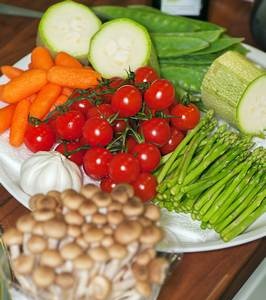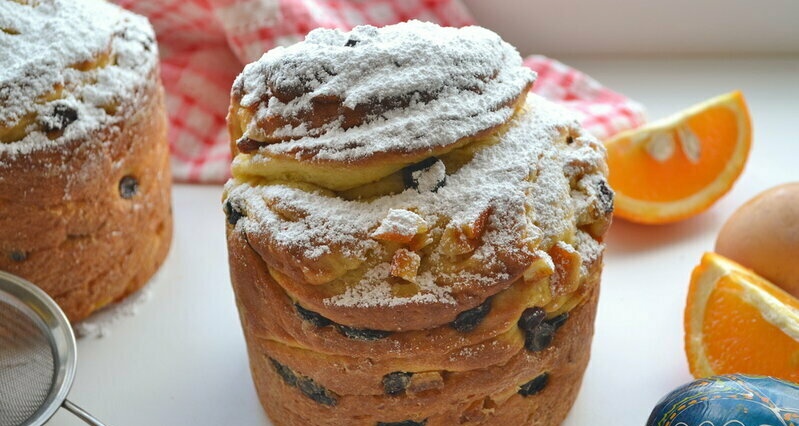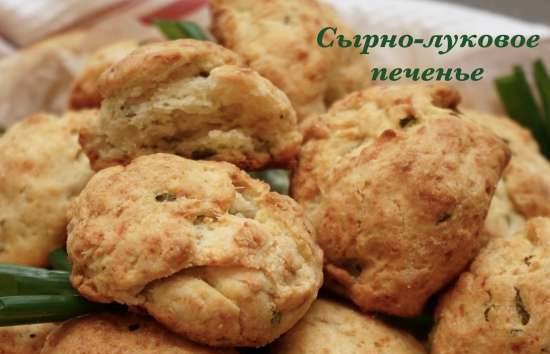|
 Most of the products undergo primary cold processing, during which they are freed from various kinds of contaminants, from inedible parts, get the required shape, etc. Most of the products undergo primary cold processing, during which they are freed from various kinds of contaminants, from inedible parts, get the required shape, etc.
The main purpose of primary processing is to bring the product to a state suitable for heat treatment.
Vegetable processing
Potatoes are first sorted, damaged and rotten tubers are removed, washed. Peeled potatoes are stored in cold water, but no more than 2 hours.
Root crops (carrots, radishes, beets, radishes, parsley) are sorted, the tops are cut, peeled and washed.
Cabbage. The head of cabbage is cleaned of the upper leaves, washed, the stump is removed and placed in salt water (60 grams of salt per 1 liter of water). If caterpillars are present, they will float to the surface of the water.
Onions and garlic are peeled from dry scales, the ovary and the bottom are cut off, washed in cold water. To avoid watery eyes, the knife is dipped into cold water while peeling the onion.
Zucchini, pumpkin, eggplant are washed, the stalks and a thin layer of skin are cut off (young zucchini and eggplant need not be peeled). The pumpkin is cut into pieces and the seeds are removed. Eggplants are boiled until half cooked. Seeds are also removed from large zucchini with a spoon.
The pepper is processed like this: the stalk is removed along with the core and seeds. Front stuffing pepper dipped in boiling water for 1-2 minutes for blanching.
Sauerkraut. It is squeezed out of the brine, sorted out, large leaves are cut into strips.
Salted cucumbers, tomatoes. They cut out the affected areas.
Greens (lettuce, parsley, sorrel, spinach, celery, dill, etc.) are freed from spoiled leaves, twigs, roots, rough stems, cuttings and washed well in running water.
Green onions are processed similarly.
 Cutting vegetables Cutting vegetables
The washed and peeled vegetables are cut by hand and in vegetable cutters. Slicing can be simple and shaped (carving, turning, notching, planing, etc.). The most common forms of it are: straws, sticks, cubes, circles, slices, wedges, checkers, rings, combs, gears, balls, barrels, cylinders, etc.
To decorate dishes from vegetables, flowers and various decorations are cut out - decorative leaves, hearts, etc., but more on that in another chapter. Both raw and boiled vegetables are cut.
Mushroom processing
When processing mushrooms, they are sorted out very carefully so as not to get poisonous, rotten and overripe, as they can cause severe poisoning. Benign mushrooms should also be carefully processed, washed, heat treated well (for a long time) and under no circumstances should they be harvested for the winter by rolling them into jars.
In fresh mushrooms, the lower part of the hemp is cut off (the spoiled and wormy parts are removed), the adhering leaves and needles (needles) are peeled off. The peeled mushrooms are washed several times in cold water. Very small ones are used whole, and large ones are cut into cubes or chopped. Some mushrooms (champignons), after cleaning, are washed in acidified water so that they do not darken. The peels are removed from the caps.
Dried sorted out, washed 2-3 times and soaked for 4 hours to swell.
Processing of cereals and legumes
Cereals and legumes are first sorted out to remove foreign impurities: unbroken grains, pebbles, stalks, etc. All cereals, except semolina and buckwheat, are washed. Buckwheat is lightly fried, and semolina is sieved. Peas, beans, lentils, beans, pearl barley and for some dishes, rice is soaked.
Karlov L., The man in the kitchen
|
 Most of the products undergo primary cold processing, during which they are freed from various kinds of contaminants, from inedible parts, get the required shape, etc.
Most of the products undergo primary cold processing, during which they are freed from various kinds of contaminants, from inedible parts, get the required shape, etc.






